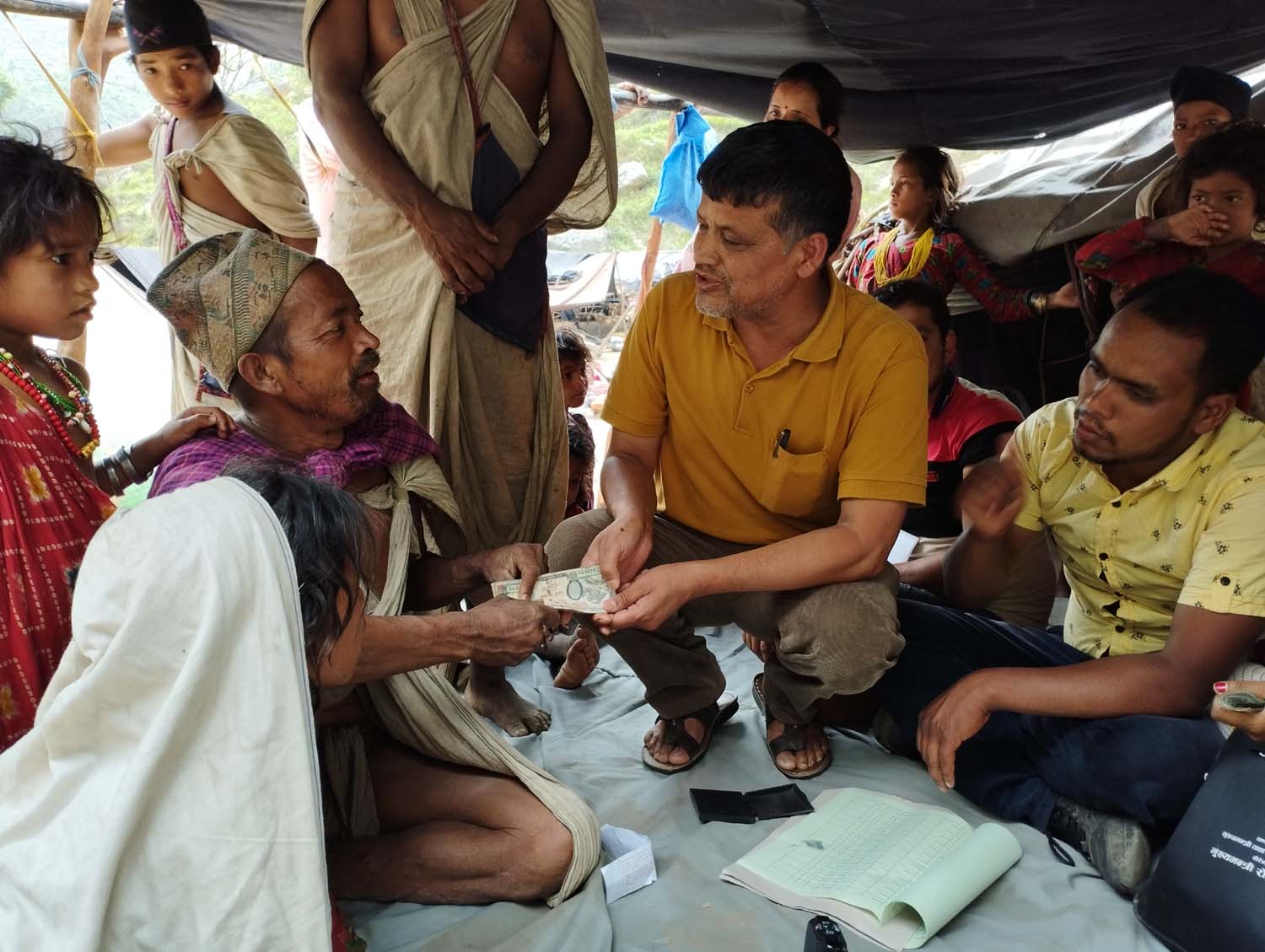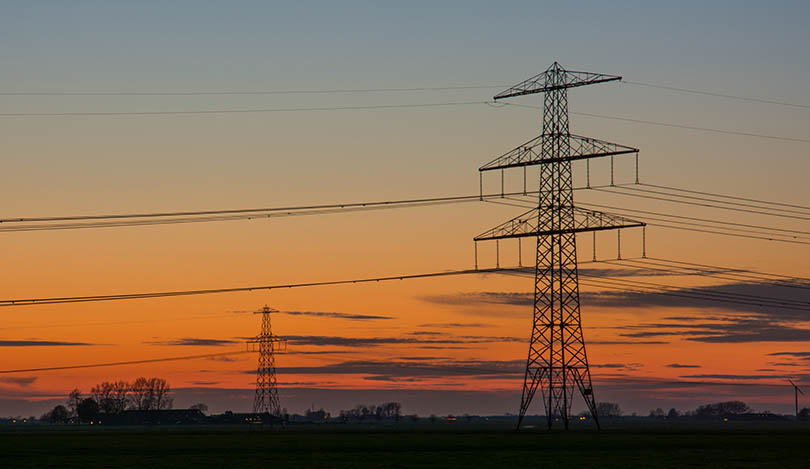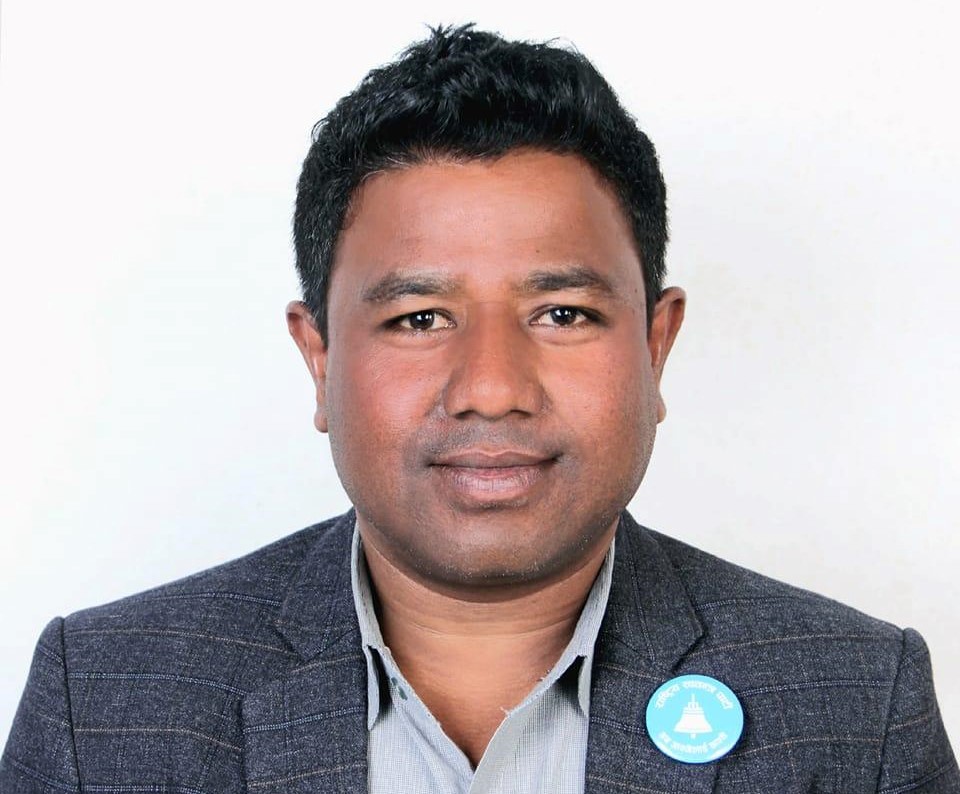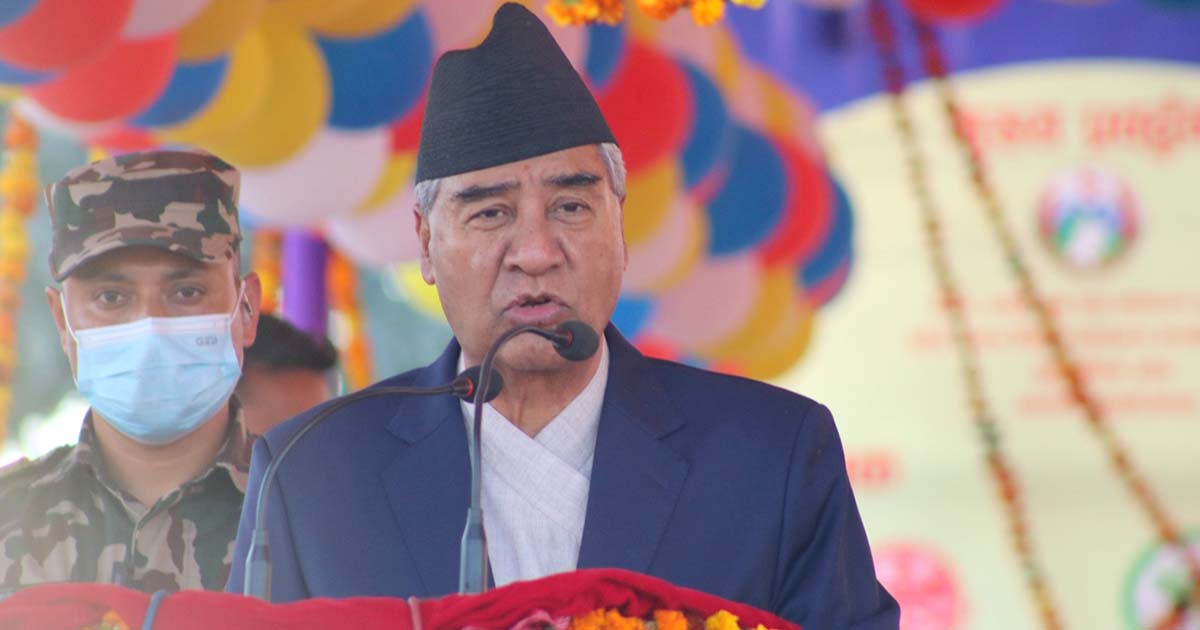No one willing to fix overcrowded prisons
It is said how a country treats its prisoners indicates its overall view on human rights. In Nepal, prisoners are treated in an inhuman way, often locked up in cramped spaces with little to no healthcare facilities. The Central Jail in Sundhara, Kathmandu, is a case in point. The country’s oldest and largest prison facility has an inmate capacity of 1,500, but it is currently holding 3,448 prisoners. Ishwori Prasad Pandey, the prison administrator, says there is no option to ease the problem of overcrowding in the facility.
“It is not just here. You find this problem in other prisons across the country,” he says. Being the oldest prison in the country, the Central Jail lacks proper infrastructure and facilities for its inmates. The facility has its own infirmary, with a 30-bed capacity and is looked after by six medical staff, but lacks in several other areas.
Human rights activist Charan Prasai says the government and the Department of Prison Management should look into the matter and come up with a solution. “Prisoners must have basic human rights too,” he says. “The fact is that the concerned government agencies don’t care.” According to Prasai, Nepali society by and large does not believe in granting basic human rights to someone convicted of a crime. “I still remember former Prime Minister Krishna Prasad Bhattarai saying that prisons should not have access to good facilities because many people will want to commit crime in order to live the life of prisoners,” he says. “Our government and society have the same mindset to this day.”
A study report by the National Human Rights Commission states that the majority of prison facilities are in poor physical condition. The report has highlighted that basic utilities like lighting, bathrooms, and water are unavailable in most prisons, and prisoners frequently have to sleep on the floor and eat in filthy conditions. Inadequate medical care is a serious problem in Nepal’s prisons. Sick inmates don’t get the attention they need on time. The plans governments in the past came up with to reform the prison system either remain unimplemented or incomplete.
On 3 April 2014, the then government decided to move the Central Jail to Nuwakot district. The proposed prison facility with the capacity of holding 7,000 prisoners is still under construction. Another regional prison is also being built in Jhumka, Sunsari. It is said to have a holding capacity of 3,000 inmates. It remains uncertain when these two prisons will be completed. Nepal currently has 74 prisons across the country, two each in Kathmandu and Dang.
Dhanusha, Bara, Bhaktapur, Nawalparasi (East), and Rukum (East) are the only districts that don’t have their own prisons. The total number of inmates and detainees stands at over 27,000. The framework for general prison management is provided by the Prisons Act of 1963 and the Prisons Regulations of 1964, which have been updated as necessary to reflect evolving conditions.
“While the idea of developing prisons into correctional facilities has received increasing attention in recent years, the government has yet to fully embrace the concept,” says former Nepali Police Deputy Inspector General Hemanta Malla Thakuri. A plan to set up an open prison in Banke and convert existing prisons and correctional facilities were outlined in the budget speech for the fiscal year 2022/23. Nothing has come of the plan yet. With the current state of Nepali prisons, Thakuri says it is impossible to provide decent living conditions to prisoners. “There are laws in place, but we have not implemented them.”
The Prisons Act states that in order to prohibit meetings and communication between male and female inmates, they must be housed in separate buildings or, if that is not possible, in separate areas of the same prison facility. Similarly, if inmates and detainees are housed in the same facility, they must be kept apart. Additionally, it is necessary to keep inmates and detainees under the age of 21 apart from those who are older.
Convicts participating in criminal and civil trials are also required to be housed in different parts of the prison. Ditto for prisoners who are unwell and those who have mental illnesses. “With our prison facilities overwhelmed by inmates, it is difficult to follow many of these laws,” says Thakuri. “There is also the risk of inmates forming a criminal network inside the prison.”
Overcrowded prisons also pose difficulty for the authorities to keep track of the inmates. When Sundar Harijan of Banke died under a mysterious condition at Rolpa prison on 18 May last year, it was later revealed that he had been serving the time for Bijay Bikram Shah of Surkhet. A probe committee found out that Shah, the real convict, had worked out a deal with jailers and prison guards to imprison Harijan in his stead. In the wake of the incident, the provision of issuing inmate ID cards was introduced as part of the Prison Administration Reform Plan.
However, the provision has not been fully implemented. Rights activists say it is difficult to know the real condition of Nepali prisons, as the authorities are reluctant to allow a third-party inspection. What takes place in the confines of prison, or for that matter, in police lockup almost nearly gets out. In 2021/22, four prisoners—Hakim Miyan, Durgesh Yadav, Bijaya Mahara, and Sambhu Sada—died while being held by the police.
The NHRC is still investigating the matter. Rights activists say immediate and short-term actions with defined action plans must be taken to improve the overall condition of the prison system. This entails giving the cases of those who are being held pending trial priority and transforming prisons into correctional facilities by promptly fixing and maintaining deteriorating physical structures, making suitable arrangements for sewage and water, scheduling regular health checks and medication, and assigning staff members to designated positions. It’s also critical to emphasize the placement of health workers and maintain a clean prison environment.
“Little has changed when it comes to Nepal’s prison system,” says Prasai. “We have the same old facility and the same attitude of treating our prisoners. We can only hope this will change one day.”
Despite resource crunch, parties keep on increasing social security beneficiaries
The resource crunch that the government is currently facing after failing to meet the revenue target has not prevented ruling political parties from announcing populist programs which are sure to increase the state’s long-term liability.
One of the announcements made through the Common Minimum Program (CMP) by the ruling parties on Monday is increasing the number of social security scheme beneficiaries to six million in the next five years. If this announcement is materialized, the number of beneficiaries will almost double in the next five years. As of the last fiscal year 2021/22, there were 3.57m beneficiaries of social security.
As per the 2021 population census, Nepal’s population is 29.19m. Providing a social security allowance for 6m means the country’s one-fifth of the population will receive a cash dole-out. The CMP talks about providing cash dole-outs to elderly people, widows, single women, disabled people, members of communities on the verge of extinction, and different categories of children with a certain allowance from the state. While announcing the plan, the ruling parties have not disclosed how the state could generate the resources to meet the resources needed for increasing the both number and amount of social security allowance.
Economists say it was an irresponsible act on the part of the ruling parties to announce a new dole-out package at a time when the government is struggling to meet even existing recurrent expenditure from the revenue. As of Jan 9, the government collected revenue of Rs 385.73bn while its administrative expenditure stood at Rs 436.23bn, according to the Financial Comptroller General Office.
“It is quite expensive for the state to provide a social security allowance of one in every five persons,” said a former finance secretary. “It is too big a number and making an increased number of people dependent on the state when there is no extra source of income is not sustainable in the long-term.”
Economist Posh Raj Pandey said that the government should have streamlined the social security scheme. “What is happening now, is in terms of socio-economic perspective, those who’re entitled are not getting, and those who’re not entitled are getting the scheme,” he said.
Economists say the government could spend a higher amount of state resources on improving the quality of health and services and make these services affordable to the majority of people instead of doling out cash for individuals. Cash doll out is a misguided priority of the political parties just to get political benefits. It should be very targeted and should be available to only limited people, they say.
Over the last several years, the number of beneficiaries of social security allowance and the amount to be given to each beneficiary has been rising rapidly. There were 2.04m beneficiaries of social security allowance in fiscal 2011/12 which increased to 3.57m in the last fiscal 2021/22. The amount being spent on them has however been rising even faster. For example, the government spent Rs 68.61bn on social security allowances in the fiscal year 2020/21, according to the Department of National ID and Civil Registration.
The government is expected to spend nearly double that amount in the current fiscal year due to an increased number of beneficiaries and an increased amount for them. The government has allocated Rs 105bn for social security allowance in the current fiscal year, according to the Finance Ministry.
Despite the growing burden of social security allowances, successive governments have continued adding more beneficiaries and expanding the purview of social security. While presenting the budget for the fiscal year 2021/22, the then KP Sharma Oli-led government increased all social security allowances by 33 percent, including the elderly allowance to Rs 4,000 per month from Rs 3,000 per month.
A year later, the Sher Bahadur Deuba-led coalition government, reduced the eligibility age for receiving an elderly allowance to 68 years from 70 years at a time when Nepal’s life expectancy has been rising. As a result, a total of 113,911 new beneficiaries were added to the elderly list due to the lowering of the eligibility age during the first quarter of the current fiscal year, according to the Department of National ID and Civil Registration. Besides the natural rise in the number of beneficiaries, lowering of age limit increased the number of beneficiaries substantially.
According to a World Bank report, the overall public spending on social protection rose rapidly in Nepal for a decade—from the fiscal year 2010/11 to fiscal 2019/20. According to the report, the government’s spending on overall social protection was Rs 26 billion in the fiscal year 2010/11, which surged to Rs 189bn in fiscal 2019/20, which includes both cash dole-out and other social protection programs.
The first social security scheme in Nepal was launched in 1994/95 by the government led by the then CPN (UML) leader Manmohan Adhikari. The scope of the scheme, which started by providing Rs 100 a month to the elderly, was gradually expanded to include other types of beneficiaries.
Bangladesh seeks visible Indian cooperation
Bangladesh’s state Minister for Power, Energy, and Mineral Resources Nasrul Hamid has sought “visible Indian cooperation” for importing hydropower from Nepal and Bhutan.
According to The Daily Star, he made such a request in talks with Indian officials in New Delhi this week. Nasrul talked about the growth of Bangladesh’s power sector and said the demand for electricity is increasing continuously in the country. “If electricity can be imported from Assam, uninterrupted supply to northern Bangladesh can be ensured,” he said. In response, the Indian side assured to cooperate to operationalize Nepal-Bangladesh energy trade.
In an Interview with ApEx, Ambassador of Bangladesh to Nepal, Salahuddin Noman Chowdhury said that Energy cooperation is a very prospective area between two countries. He said: Bangladesh is energy hungry while Nepal will soon become energy surplus. That is a perfect scenario for complementing each other’s needs.” We are also engaged in discussions on Bangladesh’s possible investment in hydropower projects in Nepal, he added.
Also in the area of water sector cooperation, we are willing to work together for a basin-wide management of our water resources for mitigation of floods, augmentation of flow in lean season, and exploiting potentials for generation of hydropower, the Ambassador said.
But, the prospect of Nepal exporting 50MW of electricity to Bangladesh through the Indian transmission link may not happen soon. The Indian side has recently told Nepali officials that electricity export from Nepal to Bangladesh through the Baharampur-Bheramara cross-border power transmission line is not immediately possible.
In August this year, Nepal and Bangladesh decided to request India to allow the export of 40-50 MW of electricity from Nepal to Bangladesh in the initial phase by utilizing the Baharampur-Bheramara cross-border power transmission line.
Santosh Pariyar: RSP is not anti-federalist
Newly-formed Rastriya Swatantra Party (RSP) has joined the government despite internal differences on the matter as well as divergent public opinion. Chairman and leader of RSP’s parliamentary party Rabi Lamichhane is helming the Ministry of Home Affairs amid lots of expectations and speculations from different quarters. The nascent party has also come under criticism for not unveiling its ideology and showing anti-federalist tendencies (The party did not contest provincial elections). Pratik Ghimire of ApEx talked to Santosh Pariyar, a member of the House of Representatives representing the party.
Are you happy with your party joining the government?
I don’t find any reason to be unhappy as this decision was made after discussions within the party committees and parliamentary party committee. We are in mainstream politics and joining the government is the only way to deliver on the promises we made.
This decision has caused disputes in your party. Will it impact the party’s future?
Different members of a democratically-run political organization can have different views. That is the beauty of such an organization. I don’t think this (difference of opinion) will have a negative impact on the party. It doesn’t mean there’s no room for opinion that is different from the party line. Differing voices are equally important because we built this organization together, after all. These disputes can be resolved through intra-party talks. How will we perform from the positions of power? That is what matters the most. If we can bring peace and prosperity, we will definitely emerge as a successful party.
Will this focus on the government not hamper the expansion of party organization?
Though a new party, we have a large number of members with only a handful of members in the parliament. Also, only a couple of us will be in the cabinet. There are more capable members to run and expand the party structure. We will run both the government and the party in a balanced manner.
People have high hopes from the ministries you get. How will you meet them?
That people have faith in us is a matter of pride for us. Now, it's time to not let the people down. Our major priority is a corruption-free nation because corruption has become a (kind of) culture here. Corruption has prohibited people from fulfilling their basic needs like education, health and employment. We will work and deliver on each promise we made during the election campaign.
Is your party anti-federalist?
This is a wrong narrative. We are not anti-federalist. We have asked for a directly-elected provincial chief and advocated a better provincial system. Our demand is that provinces not be turned into recruitment centers. Then how can we be against federalism? We didn’t vote in the provincial ballot because we were not in that particular race. Being a political party, why would we vote for other parties? This was the real reason, while a wrong narrative prevailed. We couldn’t clarify our stance and that was, I think, our mistake. As for our ideology, it is inclusive democracy with social justice. How they define it with existing trends like leftist, rightist or centrist is up to the people and political parties.
Jagannath Khatiwada: CPN (US) will wait, watch, and decide
After the breakup of the erstwhile ruling coalition, the Madhav Kumar Nepal-led CPN (United Socialist) seems to be in a dilemma on whether to join the government or stay in the opposition. After its split with the CPN-UML, it’s a given that the two parties are not on good terms. Many critics argue that the new ruling coalition under the CPN (Maoist Center) and the CPN-UML has endangered the future of the newly formed CPN (US). Against this backdrop, Pratik Ghimire of ApEx talked to Jagannath Khatiwada, deputy general secretary and head of the party’s publicity department.
Who do you think is responsible for the breakup of the previous coalition? Nepali Congress or the CPN (Maoist Center)?
For me, both parties are equally responsible. Sher Bahadur Deuba had pledged Pushpa Kamal Dahal premiership (for the first half of the five-year term), but he reneged on his promise. Congress, at first, cheated the Maoist Center. Partners in the previous coalition have always felt that Congress was dominating and insulting. Dahal had reiterated that he would never break the coalition for position and power. What he did is there for all to see. Dahal broke the coalition in the interest of regressive forces. So, he is responsible too.
Leaders of the Maoist Center point out that UML had shown regressive tendencies during the previous parliament. In their eyes, is the UML regressive no more?
That force was regressive a couple of days ago as well. After offering premiership to the Maoist party, the UML is no longer regressive? It has become progressive, automatically? Our party has no problem with the Maoist Chair Dahal becoming the prime minister. But he quit the previous ruling coalition without discussing the matter or giving anything in writing. That's where the problem lies.
Is it right for your party to join the new ruling coalition?
We have seen UML’s behavior and even experienced their domination for quite long. So, we will hold discussions within the party and think it through before making a decision. On what terms has this coalition taken shape? We have no idea. We have a bit of time to think about these things and make a decision. Our party will wait, watch and decide.
Are there any discussions in your party about merging with the Maoist Center or the UML?
It is not an agenda of the party’s working committee. But a few rounds of talks took place on the matter and we were positive on starting homework for the road ahead. But this chapter is closed for now.
Then when will we see expansion of your party organization at the district and local level?
The standing committee of the party has already met. Our party will soon call meetings of the central committee and the politburo. These meetings will decide our further political course and expansion of the party organization. We are committed to making long-term plans for the party.
Gururaj Ghimire: Deuba must quit to save a sinking NC
Nepali Congress President Sher Bahadur Deuba has come under heavy criticism from within the party for his role in breaking the five-party ruling alliance with the CPN (Maoist Center) and other fringe parties, something which made way for a ruling dispensation comprising the Maoist party, the CPN-UML and other fringe parties. Questions have also arisen as to what the NC will do next after this debacle that has ended up consigning the largest party in the parliament to the opposition bench in the federal parliament and the provincial assemblies. In this context, Pratik Ghimire of ApEx talked to Gururaj Ghimire, a Congress leader.
Why did the NC-Maoist coalition fail?
In the coalition, I feel that every party has the right to claim the prime minister’s position. Dahal had openly asked for it. Chitra Bahadur KC too could have asked for it as he was among the veterans. So could have Loktantrik Samajbadi Party as no one from Madheshi communities has become Nepal’s prime minister as yet. We have discussed these agendas too. But in our party, people around Deuba cultivated in the Congress this mindset that the party should lead the government. For me, it’s not only the fault of the Maoists, but also the incapability of our party.
What will be the political scenario now?
There is a chance of the UML and the Maoist party uniting once again and CPN (US) becoming a part of it|. Together, they could be the largest party, which means the Congress losing everything in the federal and provincial cabinets. Our party should have thought about a possible scenario like this. Despite being the largest party, we have lost everything. This has impacted our cadres across the nation and I feel there is no way out for us for the next 10-15 years.
How will this impact the next general election?
We will have to compete with a mighty communist party, which is not an easy job. We felt it in the 2017 elections. The rise of the Rastriya Swatantra Party is also a matter of concern. They took the deputy prime minister and the home ministry. They will aggressively expand their party now, which will pose a serious challenge for us. This party has many advantages and options to attract the votes. There are multiple hurdles for us now, some more will come up in coming years.
What do you think of Deuba leadership?
There was an established narrative that our party president could easily handle the inter-party alliances. Even in our general convention, there was no discussion on the agendas. The only thing that came under discussion was Deuba’s capacity to give continuity to the alliance. But this narrative is no longer valid. I have only one expectation from him now. Deuba must admit he is not capable of running the party, should resign and make way for a new leadership. This must be discussed in our party meeting soon. If he doesn’t agree on this, there must be a call for a special convention to throw him out.
How do you see the future of NC?
If the party calls a special convention and manages all this mess, we will emerge stronger. But if this doesn’t happen and we wait for the current coalition to fail with the hope of rising again, I see a dark future for our party. This will lead our party to hell, literally. We need an aggressive reform in the party, at any cost.
Deuba in hot water, once again
Soon after the Nepali Congress emerged as the largest party in the House of Representative, the party leaders started staking claim for the posts of president and prime minister. This opinion was not limited to NC President Sher Bahadur Deuba and his coterie. Deuba’s rival leaders Shekhar Koirala and Gagan Thapa also joined the chorus.
As the largest party, the NC leaders were of the view that the party was the bona fide contender to run Sheetal Niwas and Baluwatar. This didn’t go down well with the CPN (Maoist Center), NC’s election ally and pre-election coalition partner.
Before the Nov 20 elections, Deuba had agreed to hand over the prime ministerial post to Maoist Chairman Pushpa Kamal Dahal. After seeing that Deuba was planning to renege on the deal, Dahal mobilized some of his party leaders for power-sharing talks with the CPN-UML. Deuba and his supporters were confident that Maoist party would never partner with UML, given the bad blood between Dahal and UML chair KP Oli.
Even when Dahal walked out of the power-sharing meeting with the NC, Deuba and his supporters were hoping the former to return. The NC leaders were stunned when they learned that Dahal and Oli had agreed to a power-sharing deal. Aghast, Deuba immediately called Dahal and tried to offer the premiership, but the latter replied that it was already too late. The NC, which holds 89 seats in the HoR, suddenly found itself relegated to the opposition benches.
The Maoist and UML cobbled together a seven-party alliance. This same alliance is likely to form governments in provinces as well, rendering NC powerless.
Now, Deuba is under heavy pressure from the party rank and file. There have been calls for his resignation. To neutralize the dissenting voices, he has called for the party’s Central Working Committee (CWC) meeting. But NC leader Guru Raj Ghimire says the damage has already been done. “Nepali Congress cannot recover from this loss for another 10-15 years,” he says. “The party president must resign for this blunder.” Ghimire fears the three communist forces—UML, Maoist and CPN (Unified Socialist)—could merge to become the single largest party. It is not just the leftist parties coming together that the NC needs to worry about.
Right of center parties like the newly formed Rastriya Swatantra Party is also gaining ground. Ghimire admits it is going to be tough for the NC in the next election. “Besides President Deuba, other senior office-bearers should also take the blame for what happened,” he says. As the party prepares for its CWC meeting, the rival faction led by Koirala is planning to make a strong case against Deuba’s leadership. The group met on Wednesday to discuss the agenda for the meeting, where they concluded that the debacle was caused by some leaders’ lust for power.
Prakash Sharan Mahat: NC will find out who’s behind the setback
In a surprise move, CPN-UML and CPN (Maoist Center) and other fringe parties have formed a coalition government, consigning the largest party in the Parliament, Nepali Congress, to the opposition bench. NC President Sher Bahadur Deuba is facing criticism over this debacle. Against this backdrop, Pratik Ghimire of ApEx talked to Congress Spokesperson Prakash Sharan Mahat.
How do you see the move of Pushpa Kamal Dahal?
Dahal's bottom line was that he must be the prime minister. In our party too, there were discussions on giving him the first premiership and we offered him the position at last, but he decided to go with the other alliance.
Who is responsible for such a situation?
Some leaders have resorted to social media to pinpoint specific leaders. Our party had officially decided to form a government under our leadership. As the largest party in the parliament, it was natural for us to claim government leadership. So, it is not appropriate to put blame on specific leaders. Yet, our President Sher Bahadur Deuba was lately in favor of keeping the coalition intact by offering Dahal the premiership.
Why did the Congress not adopt flexibility on power-sharing?
All leaders were on the same page that the party should claim both the president and prime minister. So, Deuba is not solely responsible for the current situation as claimed by the media and even some of our party leaders. There is a tendency to criticize Deuba. We would have faced more scathing criticism from party leaders if we had agreed to support Dahal as the new prime minister. Party leaders should realize that only a united party makes all party leaders strong.
As I said, Deuba was convinced at last that Dahal should get the premiership when the latter went to Balkot to form an alliance with UML. We even contacted Dahal and asked him to return. But Dahal said it was already late as he had made an understanding with the UML. Congress was flexible on this issue but a few leaders pressed our party president not to give away any of the important positions (to the Maoist party). They would not even participate in meetings and give their opinions publicly, thereby hampering the Congress-led ruling coalition. As a responsible party member, I had suggested to Deuba that we should be flexible to keep the coalition intact and he was positive too.
Being the largest party, Congress didn’t look prepared to be in the opposition. What will your party do now?
Yes, we were not ready as everything was moving in a positive direction. But we now have to review how this situation came about and who is actually responsible. The current ruling coalition consists of both pro and anti-federalist parties. Pro-monarchy and anti-monarchy forces are also there. This coalition has no ideological consensus, so it might break in the near future and we might return to power.
What role will the Congress play as the main opposition?
Since we are the largest party, we will make our presence felt in the parliament. We will not resort to vandalism and protests as our history doesn’t allow us to do that. In the past, we could not play an effective role as the opposition because we had a few parliamentarians who had won through the first-past-the-post system. This time, we have many of them and we will emerge as an effective opposition.














